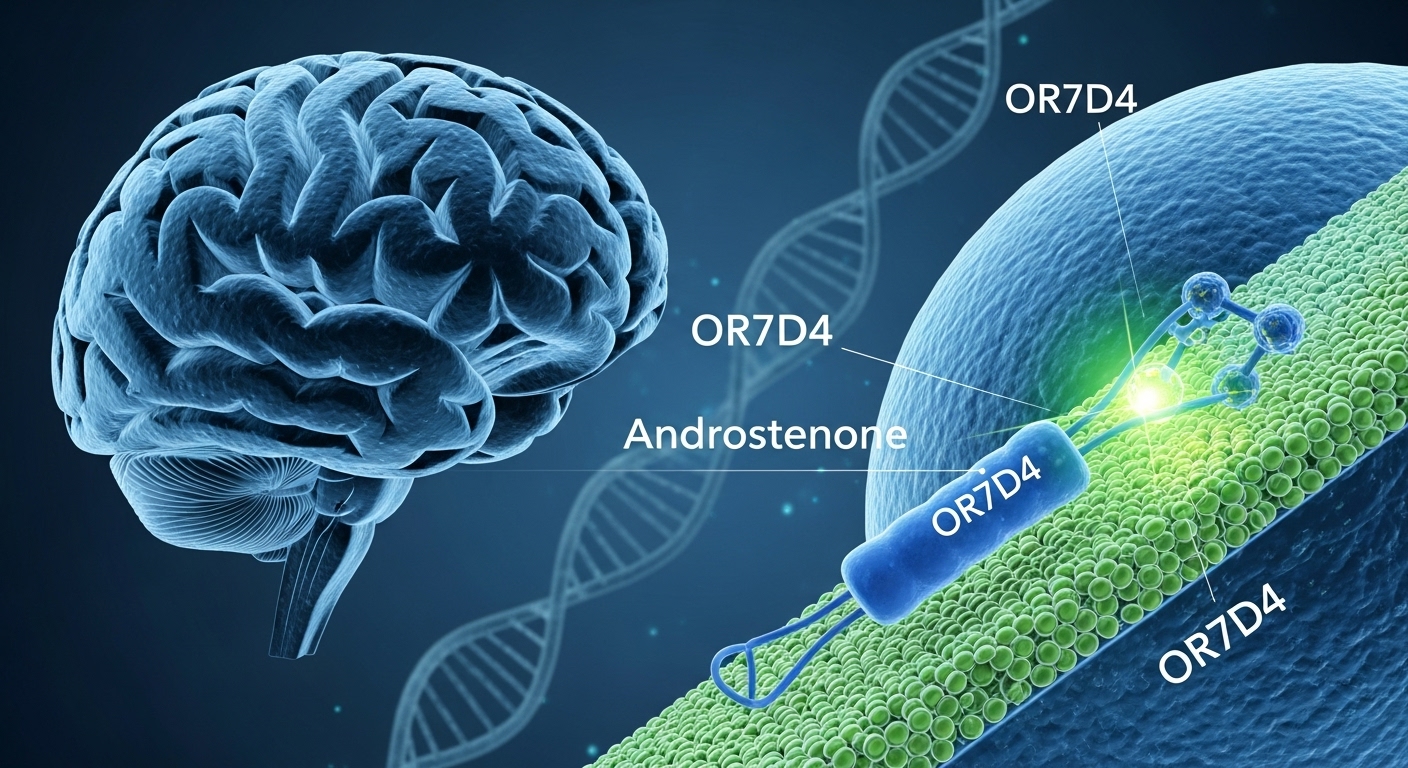Abstract: The existence of human pheromones remains a topic of scientific controversy, but recent genetic research has provided the clearest link yet between specific odorant receptors (ORs) and steroid perception. The human olfactory receptor **OR7D4** is genetically linked to the perception of the steroid compounds **androstenone** and **androstadienone**—two chemicals widely employed in commercial pheromone products. This article explores the structure of OR7D4, its genetic variants, and how its function directly correlates with how an individual perceives these putative human chemosignals.
The Olfactory Receptor OR7D4
OR7D4 is a G protein-coupled receptor (GPCR) encoded by a gene on human chromosome 19. It was identified in a cell-based screening assay as a receptor specifically tuned to the detection of androstenone and the related compound, androstadienone (Keller et al., 2007). These compounds are found in human sweat and are structurally related to testosterone, making them prime candidates for chemosignals in humans, similar to their proven role as sex pheromones in boars and other mammals.
Genetic Variation and Perception Phenotypes
Critically, OR7D4 exhibits common genetic variation in the human population that drastically alters its function (Keller et al., 2007). Two key single nucleotide polymorphisms (SNPs) define the major variants:
- **OR7D4 RT (Functional Variant):** Individuals carrying two copies of the functional receptor (RT/RT genotype) are typically highly sensitive to androstenone, often perceiving it as an unpleasant, sweaty, or urine-like odor.
- **OR7D4 WM (Impaired Variant):** Individuals carrying the non-functional WM variant show severely diminished responses to androstenone in laboratory tests. These individuals are often anosmic (unable to smell) or hyposmic (less sensitive) to the compound and find the odor significantly less unpleasant (Keller et al., 2007).
Implications for Human Pheromone Research
The discovery that a single human olfactory receptor governs the perception of these steroids is groundbreaking. It shifts the study of human chemosignals from merely behavioral anecdotes to concrete molecular biology (Keller et al., 2007).
For example, studies have shown that the OR7D4 genotype is a significant predictor of how consumers evaluate cooked pork containing natural androstenone—those with the functional receptor are more likely to dislike the “boar taint” flavor (Lundström et al., 2012). This demonstrates that genetic variability in olfactory perception can directly impact complex human behaviors, including food preference and, potentially, social and sexual signaling, providing a strong scientific basis for the effects of specific steroidal compounds.
References
Keller, A., et al. (2007). Genetic variation in a human odorant receptor alters odour perception. *Nature*, 449(7161), 468–472.
Lundström, K., et al. (2012). Genetic variation of an odorant receptor OR7D4 and sensory perception of cooked meat containing androstenone. *PLoS ONE*, 7(5), e35259.


Leave a Reply